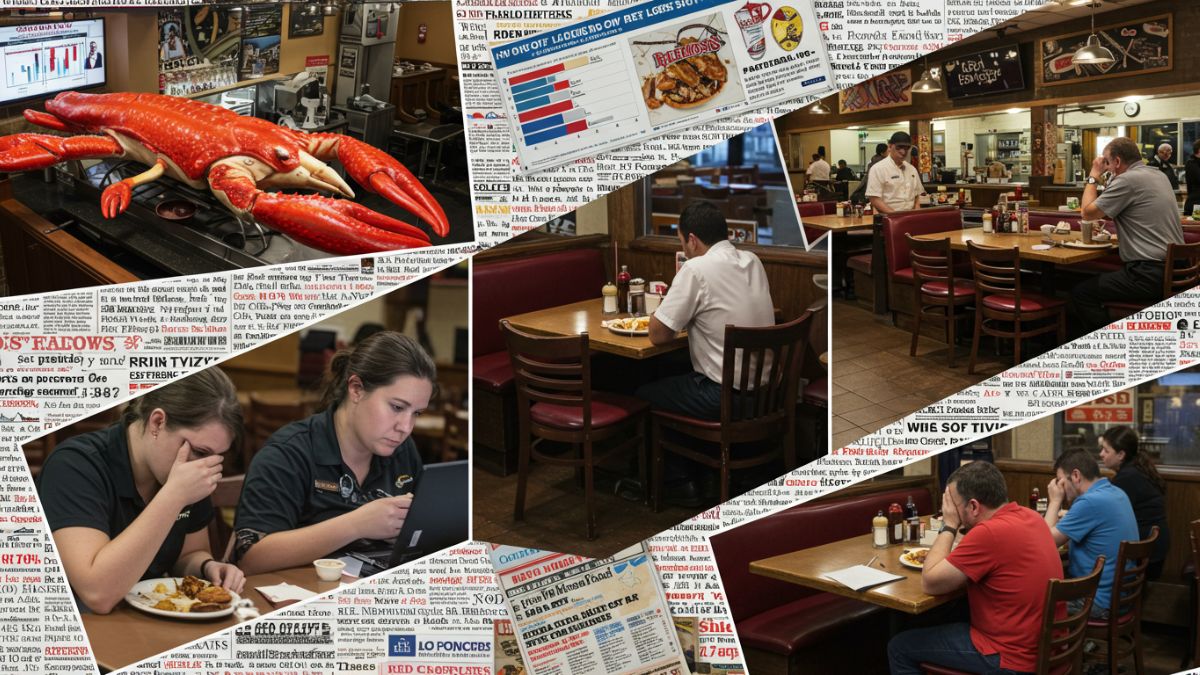The recent announcements of Red Lobster and TGI Fridays closing multiple restaurants across the United States have stirred concern among fans and industry watchers. These two household names, once synonymous with casual dining and Friday night traditions, are now facing a harsh reality: shrinking customer bases, rising costs, and changing dining preferences.
While neither chain is vanishing completely, the closures represent a significant shift in how Americans are choosing to eat out—and what the future holds for legacy restaurants.
A Brief History: From Dining Royalty to Restructuring
Red Lobster, founded in 1968, made seafood accessible and affordable for millions of Americans. With its signature Cheddar Bay Biscuits and all-you-can-eat shrimp specials, it carved out a unique space in the casual dining world.
TGI Fridays started in 1965, becoming one of the first chains to embrace the casual, upbeat dining atmosphere with signature cocktails and American-style cuisine. Its emphasis on “Friday energy” helped it grow to international fame.
However, even strong brand recognition isn’t enough when the industry is evolving faster than ever.
Why Are Red Lobsters and TGI Fridays Closing Locations?
The closures of Red Lobster and TGI Fridays restaurants are not random decisions—they’re the result of deeper, industry-wide changes. Let’s explore the leading causes:
1. Changing Consumer Preferences
One of the biggest factors behind the Red Lobster and TGI Fridays closing announcements is the shift in customer behavior. Today’s diners—especially millennials and Gen Z—favor fast-casual restaurants, local eateries, and food delivery apps over traditional sit-down meals.
Speed, convenience, and healthier options are now top priorities. The typical dining experience offered by legacy chains like Red Lobster and TGI Fridays often doesn’t meet the expectations of modern consumers.
2. Skyrocketing Operational Costs
Restaurants have been battling inflation, labor shortages, and increased costs of ingredients for years. Property leases, utility bills, and wages are higher than ever.
For underperforming locations, keeping the lights on simply doesn’t make financial sense. Chains like Red Lobster and TGI Fridays are closing outlets that consistently lose money in an effort to consolidate and remain profitable.
3. Pandemic Aftershocks
The COVID-19 pandemic fundamentally reshaped the restaurant industry. While many restaurants adapted by offering delivery and takeout, dine-in chains suffered greatly. Even after reopening, customer traffic never fully recovered to pre-pandemic levels.
Chains that relied on in-person dining—like Red Lobster and TGI Fridays—struggled to bounce back, forcing corporate decisions to close less viable locations.
4. Increased Competition and Market Saturation
The casual dining space is overcrowded. Dozens of chains now compete for a smaller pool of customers. New players like Shake Shack, Sweetgreen, and fast-casual fusion eateries are eating into the market share once dominated by older chains.
Without constant innovation, it’s easy for legacy brands to get lost in the noise. The Red Lobster and TGI Fridays closing headlines are evidence of that competitive pressure.
5. Outdated Brand Image
Both Red Lobster and TGI Fridays have attempted to rebrand in recent years, but the changes haven’t always resonated with younger diners.
TGI Fridays revamped its menu and restaurant decor to modernize its image, and Red Lobster made efforts to update its digital platforms and seafood offerings. Still, the perception of these chains as “your parents’ restaurant” lingers.
Locations Affected by the Closures
The Red Lobster and TGI Fridays closing process is happening strategically. Not every location is affected, but several underperforming outlets in states like Florida, New York, Texas, and Ohio have already closed or will be shuttered soon.
This doesn’t spell the end for either chain. Instead, both companies are attempting to trim the fat and reallocate resources toward stronger, more profitable locations.
The Human Impact: Staff and Customers Left in Limbo
For many employees, these closures are sudden and life-altering. Servers, cooks, and managers at affected locations face job loss and an uncertain future. While some staff are relocated to other branches, many are left to search for new employment in a difficult job market.
Customers, too, feel the loss. These restaurants have been community hubs for decades, hosting family dinners, birthday celebrations, and first dates. Seeing a local Red Lobster or TGI Fridays shut its doors marks the end of a familiar chapter in many people’s lives.
What’s Next for Red Lobster and TGI Fridays?
Despite the downsizing, neither brand is closing completely. Both are aiming to pivot, focusing on leaner operations and modern strategies.
-
Red Lobster has announced plans to streamline its business model, invest in international markets, and double down on digital ordering.
-
TGI Fridays is exploring franchise partnerships, smaller-format restaurants, and innovative menu revamps to stay competitive.
This period of transition could allow both chains to evolve with the times, potentially reclaiming their positions in a new version of American dining.
Lessons from the Red Lobster and TGI Fridays Closing Wave
The rise and partial fall of these brands offer a few critical lessons for the broader restaurant industry:
-
Adaptability is essential. Chains that don’t evolve with customer preferences are at risk.
-
Tech integration matters. Online ordering, app-based reservations, and contactless payments are now expected.
-
Quality over quantity. Instead of expanding rapidly, successful chains will focus on delivering great experiences at a few strategic locations.
Conclusion
The story of Red Lobster and TGI Fridays closing dozens of locations is not just about two restaurant chains. It’s a reflection of a changing industry—one that is increasingly shaped by technology, evolving tastes, and economic realities.
For long-time fans, the news is bittersweet. But for the restaurant world at large, it’s a wake-up call: innovate or become irrelevant.

